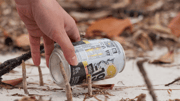
Next time you're settling into your seat on a flight to visit the grandchildren or boarding a cruise ship for a holiday, take a moment to look around.
Notice something? Every single window is round or oval. But step into any building, home, or car, and you'll see nothing but squares and rectangles.
This isn't just a design quirk—it's the result of some of the most catastrophic engineering failures in history, disasters that claimed hundreds of lives and revolutionised how we build everything from ships to spacecraft.
The story begins with a mystery that stumped the world's brightest minds for years, and solving it required one of the most extraordinary pieces of detective work ever undertaken. It's a tale that combines wartime desperation, British engineering ambition, and the deadly consequences of not understanding the invisible forces that tear metal apart.
In this article
When ships split like kindling: The Liberty Ship disaster
During World War II, America faced an urgent challenge. Allied ships were being sunk faster than they could be built, and Britain desperately needed supplies. The solution was the Liberty Ship program—a massive effort to build 2,710 cargo vessels in just four years. These ships needed to be constructed quickly and cheaply, using largely unskilled workers and a revolutionary new technique: welding instead of traditional riveting.
The U.S. Liberty Ship Building Program set a record with 2,700 Liberty Ships built in 6 years to support the battle against Nazi-Germany, but numerous vessels suffered sudden fracture, some being split in half. The fastest ship was completed in just 42 days, but speed came at a terrible cost.
Why corners kill: The science of stress concentration
- Sharp corners act like 'stress magnets' concentrating force in one tiny area
- Square edges create up to 70 per cent more stress than rounded ones
- The sharper the angle around which stress must travel, the greater that concentration will be
- Cracks always start at these stress concentration points
- Once started, cracks can travel at the speed of sound through metal
Hull and deck cracks were common, with 12 Liberty Ships breaking in half with no warning, including the SS John P. Gaines in which 10 lives were tragically lost. The SS Schenectady became the most famous failure when it cracked in half amidships on January 16, 1943, at Portland, Oregon, with the ship's deck and side shells fracturing completely.
But what was causing these massive ships to simply snap in two like twigs?
The woman who solved the mystery
The answer came from an unlikely source: Constance Tipper, working in Cambridge, who carried out impact energy tests on Liberty ship steel to show that the energy required to crack samples fell markedly at low temperatures of Atlantic operation. Her groundbreaking work revealed that the brittle fractures were caused by low notch toughness at low temperature of steel at welded joints, with almost all accidents occurring in winter.
'The brittle fractures that occurred in the Liberty Ships were caused by low notch toughness at low temperature of steel at welded joint, which started at weld cracks or stress concentration points of the structure.'
Most fractures initiated at deck square hatch corners where there was stress concentration, with 52 per cent of all serious fractures on Liberty Ships originating at the corners of cargo hatches. The combination of poor-quality wartime steel, inexperienced welders, and those deadly square corners created the perfect storm for disaster.
Britain's aviation dream becomes a nightmare
Just as the Liberty Ship mystery was being solved, Britain was preparing to dominate the new age of jet travel. The De Havilland Comet, launched in 1952, was the world's first commercial jetliner—a sleek, modern marvel that could fly higher and faster than anything before it. British engineering was going to show the world how it was done.
For a brief moment, it looked like they had. The de Havilland Comet I entered service in 1952 as the flagship aircraft on the routes of the British Overseas Airways Corporation, and was hailed as a triumph of British engineering.
Then the crashes began.
Within a year of the airliner's entry into service, three Comets were lost in highly publicised accidents after suffering catastrophic mishaps mid-flight, with two found to be caused by structural failure resulting from metal fatigue in the airframe. The planes were literally breaking apart in mid-air, killing everyone on board.
The most remarkable detective story in aviation
What followed was one of the most extraordinary investigations in aviation history. A Court of Inquiry was convened, with the task of discovering the cause given to the Royal Aircraft Establishment at Farnborough, finally concluding that structural failure of the pressure cabin brought about by fatigue was the cause.
The breakthrough came when investigators tested the structure of an existing Comet in a water tank under repeated pressurisation cycles, with the fuselage coming apart in explosive decompression after just over 3,000 pressurisation cycles.
Investigative testing revealed that the relatively squarish windows were creating stress concentrations much higher than anticipated, fatiguing the material around window corners, which would quickly lead to rupture of the fuselage.
The Comet investigation by numbers
The entire forward fuselage section was tested for metal fatigue by repeatedly pressurising to 2.75 pounds per square inch overpressure
More than 16,000 cycles were completed, equivalent to about 40,000 hours of airline service
After nearly 3060 cycles, a fatigue crack was found at a rivet hole near the forward escape hatch
The conclusion was that about 9000 flight hours were sufficient to cause a crash
The physics of staying alive
So why exactly do sharp corners kill? The answer lies in understanding how forces flow through materials. Unless a pressure vessel is a perfect unbroken sphere, stress distribution will not be uniform, because stress tends to build up where a load must travel around a discontinuity such as a corner, hole, or defect—and the sharper the angle, the greater that concentration will be.
Think of it like water flowing down a river. Where the riverbank is smooth and curved, water flows easily. But hit a sharp rock jutting into the current, and you get turbulence, eddies, and erosion that can eventually carve away the entire bank.
Rounded windows provide the best compromise between safety, minimal weight, and passenger comfort, with the oval shape dispersing stress more evenly rather than concentrating it in corners.
What this means for travellers today
Every time you board a plane or ship today, you're protected by lessons learned from these historic disasters. These are some of the first structural tests that gave birth to the study of materials, with the sinking of Liberty ships leading to new thinking about ship design and manufacturing, with ships today avoiding rectangular corners and new types of steel developed with higher fracture toughness.
All future aircraft were designed with rounded windows to protect fuselage integrity, and the same principle applies to cargo and cabin doors, with circular windows also in evidence on ships and spacecraft because of their greater structural integrity.
Modern aircraft windows aren't just round—they're engineered marvels. This plastic technology is engineered to endure substantial stress and pressure differences during flight, with the characteristic oval shape playing a critical role in stress distribution, effectively minimising stress concentrations that could lead to structural failures and potentially compromise aircraft integrity.
Did you know?
Did you know?
Each aeroplane window is actually made up of three layers, with a 'breather hole' that allows air pressure between the outer and middle panes to equilibrate, managing the pressure and tension between internal and external pressure. This small detail prevents the windows from being stressed beyond their limits during flight.
The legacy of disaster
These engineering failures, tragic as they were, fundamentally changed how we build everything that moves. Detailed analyses of these failures advanced the understanding of crack formation and growth, which ultimately evolved into the discipline of fracture mechanics. Fracture mechanics as an engineering subject started around November 24, 1943, the day the Liberty ship John P. Gaines sank with the loss of ten lives.
The irony is profound: in rushing to build faster ships and planes, engineers created vessels that were fundamentally unsafe. It took catastrophic failures and brilliant detective work to understand that sometimes, the shape of something as simple as a window can mean the difference between life and death.
Today, when you see those round windows during your next trip, remember the engineers, scientists, and tragically, the passengers who paid the ultimate price to make your journey safe. Their legacy lives on in every curved corner and rounded edge that keeps us protected in the skies and on the seas.
What stories from engineering history have surprised you the most? Have you ever noticed design features that seemed odd but now make perfect sense? Share your thoughts—we'd love to hear about the everyday engineering marvels you've discovered in your travels.
Original Article
https://www.dailymail.co.uk/travel/...tml?ns_mchannel=rss&ns_campaign=1490&ito=1490
Technical Problem Identification for the Failures of the Liberty Ships
Cited text: The U.S. Liberty Ship Building Program in World War II set a record—a total of 2700 Liberty Ships were built in 6 years, in order to support the battl...
Excerpt: Liberty Ship Building Program set a record with 2,700 Liberty Ships built in 6 years to support the battle against Nazi-Germany, but numerous vessels suffered sudden fracture, some being split in half
https://www.mdpi.com/2078-1547/7/2/20
History of the Liberty Ships from World War 2: The Fatally Flawed Ships
Cited text: Nearly 3000 of the ships were built in an extremely short period; the first ship was built in just 70 days.
Excerpt: Liberty Ship Building Program set a record with 2,700 Liberty Ships built in 6 years to support the battle against Nazi-Germany, but numerous vessels suffered sudden fracture, some being split in half
https://www.brighthubengineering.com/marine-history/88389-history-of-the-liberty-ships/
Neither Money Nor Manpower: The story of the de Havilland Comet and the crash of BOAC flight 781 | by Admiral Cloudberg | Medium
Cited text: This phenomenon is called “stress concentration,” and the sharper the angle around which the stress must travel, the greater that concentration will b...
Excerpt: The sharper the angle around which stress must travel, the greater that concentration will be
How The Liberty Ships of WWII Contributed to the Study of Fracture Mechanics
Cited text: 12 Liberty Ships broke in half with no warning.
Excerpt: Hull and deck cracks were common, with 12 Liberty Ships breaking in half with no warning, including the SS John P.
https://www.linkedin.com/pulse/how-liberty-ships-wwii-contributed-study-fracture-mechanics-pinell
How The Liberty Ships of WWII Contributed to the Study of Fracture Mechanics
Cited text: 12 Liberty Ships broke in half with no warning. 3 of the ships which broke in half were Liberty Ships including the SS John P. Gaines in which 10 live...
Excerpt: Hull and deck cracks were common, with 12 Liberty Ships breaking in half with no warning, including the SS John P.
https://www.linkedin.com/pulse/how-liberty-ships-wwii-contributed-study-fracture-mechanics-pinell
Liberty Ship Fatigue Failures | Failure Case Studies
Cited text: Rushing to the fitting-out docks where the yards T2 tanker vessels were completed, graveyard shift workers discovered that the yards very first ship, ...
Excerpt: it cracked in half amidships on January 16, 1943, at Portland, Oregon, with the ship's deck and side shells fracturing completely
https://eng-resources.charlotte.edu...-failure-cases/liberty-ship-fatigue-failures/
Liberty Ship—an overview | ScienceDirect Topics
Cited text: It soon became clear that the lab tests may not have been representative of the true operational conditions of the ships, when the amazing woman scien...
Excerpt: Constance Tipper, working in Cambridge, who carried out impact energy tests on Liberty ship steel to show that the energy required to crack samples fell markedly at low temperatures of Atlantic operation
https://www.sciencedirect.com/topics/engineering/liberty-ship
Liberty ship—Wikipedia
Cited text: The brittle fractures that occurred in the Liberty Ships were caused by low notch toughness at low temperature of steel at welded joint, which started...
Excerpt: the brittle fractures were caused by low notch toughness at low temperature of steel at welded joints, with almost all accidents occurring in winter
https://en.wikipedia.org/wiki/Liberty_ship
Liberty ship—Wikipedia
Cited text: Almost all accidents by brittle fractures occurred in winter (low temperature).
Excerpt: the brittle fractures were caused by low notch toughness at low temperature of steel at welded joints, with almost all accidents occurring in winter
https://en.wikipedia.org/wiki/Liberty_ship
Technical Problem Identification for the Failures of the Liberty Ships
Cited text: Beyond these cracks, another important reason for failure associated with welding is the hydrogen embitterment; most of the fractures initiate at deck...
Excerpt: Most fractures initiated at deck square hatch corners where there was stress concentration, with 52 per cent of all serious fractures on Liberty Ships originating at the corners of cargo hatches
https://www.mdpi.com/2078-1547/7/2/20
Technical Problem Identification for the Failures of the Liberty Ships
Cited text: The exact fracture origin could not be determined; however, it is assumed that, as in 52 per cent of all serious fractures on Liberty Ships [1], it originated...
Excerpt: Most fractures initiated at deck square hatch corners where there was stress concentration, with 52 per cent of all serious fractures on Liberty Ships originating at the corners of cargo hatches
https://www.mdpi.com/2078-1547/7/2/20
Fatigue failure of the de Havilland comet I—ScienceDirect
Cited text: The de Havilland Comet I entered service in 1952, and became the first commercial airliner to be powered by jet engines. It was introduced as the flag...
Excerpt: The de Havilland Comet I entered service in 1952 as the flagship aircraft on the routes of the British Overseas Airways Corporation, and was hailed as a triumph of British engineering
https://www.sciencedirect.com/science/article/abs/pii/S1350630797000058
de Havilland Comet—Wikipedia
Cited text: Within a year of the airliner's entry into service, three Comets were lost in highly publicised accidents after suffering catastrophic mishaps mid-fli...
Excerpt: Within a year of the airliner's entry into service, three Comets were lost in highly publicised accidents after suffering catastrophic mishaps mid-flight, with two found to be caused by structural failure resulting from metal fatigue in…
https://en.wikipedia.org/wiki/De_Havilland_Comet
Fatigue failure of the de Havilland comet I—ScienceDirect
Cited text: A Court of Inquiry was convened, and the task of discovering the cause of these accidents was given to the Royal Aircraft Establishment at Farnborough...
Excerpt: A Court of Inquiry was convened, with the task of discovering the cause given to the Royal Aircraft Establishment at Farnborough, finally concluding that structural failure of the pressure cabin brought about by fatigue was the cause
https://www.sciencedirect.com/science/article/abs/pii/S1350630797000058
Why Did The de Havilland Comet Jet Airliner Keep Crashing? - Plane & Pilot
Cited text: The Truth: By testing the structure of an existing Comet in a water tank under repeated pressurization cycles, the truth became clear when the fuselag...
Excerpt: tested the structure of an existing Comet in a water tank under repeated pressurisation cycles, with the fuselage coming apart in explosive decompression after just over 3,000 pressurisation cycles
https://www.planeandpilotmag.com/article/why-did-the-de-havilland-comet-keep-crashing/
De Havilland DH-106 Comet 1 | Federal Aviation Administration
Cited text: Investigative testing, with concurrence from extensive examination of the Elba wreckage, revealed that the relatively squarish windows were creating s...
Excerpt: Investigative testing revealed that the relatively squarish windows were creating stress concentrations much higher than anticipated, fatiguing the material around window corners, which would quickly lead to rupture of the fuselage
https://www.faa.gov/lessons_learned/transport_airplane/accidents/G-ALYV
de Havilland Comet—Wikipedia
Cited text: The entire forward fuselage section was tested for metal fatigue by repeatedly pressurising to 2.75 pounds per square inch (19.0 kPa) overpressure and...
Excerpt: The entire forward fuselage section was tested for metal fatigue by repeatedly pressurising to 2.75 pounds per square inch overpressure and depressurising through more than 16,000 cycles, equivalent to about 40,000 hours of airline service
https://en.wikipedia.org/wiki/De_Havilland_Comet
De Havilland Comets—an overview | ScienceDirect Topics
Cited text: After nearly 3060 cycles (1230 real flights, 1830 simulated), a fatigue crack was found at a rivet hole near the forward escape hatch. Eventually, aft...
Excerpt: After nearly 3060 cycles, a fatigue crack was found at a rivet hole near the forward escape hatch.
https://www.sciencedirect.com/topics/engineering/de-havilland-comets
Neither Money Nor Manpower: The story of the de Havilland Comet and the crash of BOAC flight 781 | by Admiral Cloudberg | Medium
Cited text: Unless a pressure vessel is a perfect unbroken sphere, the distribution of stress will not be uniform, because stress tends to build up in places wher...
Excerpt: Unless a pressure vessel is a perfect unbroken sphere, stress distribution will not be uniform, because stress tends to build up where a load must travel around a discontinuity such as a corner, hole, or defect—and the sharper the angle,…
There’s a Very Good Reason Airplanes Have Rounded Windows
Cited text: “Rounded windows provide the best compromise between safety, minimal weight, and passenger comfort,” he says. The oval shape disperses stress more eve...
Excerpt: Rounded windows provide the best compromise between safety, minimal weight, and passenger comfort, with the oval shape dispersing stress more evenly rather than concentrating it in corners
https://www.afar.com/magazine/the-real-reason-airplanes-have-rounded-windows
Liberty ship—Wikipedia
Cited text: These are some of the first structural tests that gave birth to the study of materials.
Excerpt: These are some of the first structural tests that gave birth to the study of materials, with the sinking of Liberty ships leading to new thinking about ship design and manufacturing, with ships today avoiding rectangular corners and new…
https://en.wikipedia.org/wiki/Liberty_ship
Liberty ship—Wikipedia
Cited text: The sinking of the Liberty ships led to a new way of thinking about ship design and manufacturing. Ships today avoid the use of rectangular corners to...
Excerpt: These are some of the first structural tests that gave birth to the study of materials, with the sinking of Liberty ships leading to new thinking about ship design and manufacturing, with ships today avoiding rectangular corners and new…
https://en.wikipedia.org/wiki/Liberty_ship
WATCH: There's a Scientific Reason For Why Plane Windows Are Always Round : ScienceAlert
Cited text: All future aircraft were designed with rounded windows to protect the integrity of the fuselage, and they've stayed that way ever since. The same prin...
Excerpt: All future aircraft were designed with rounded windows to protect fuselage integrity, and the same principle applies to cargo and cabin doors, with circular windows also in evidence on ships and spacecraft because of their greater…
https://www.sciencealert.com/watch-...on-for-why-aeroplane-windows-are-always-round
Inside the Technology of Aircraft Windows | Plastics Engineering
Cited text: This plastic technology is engineered to endure the substantial stress and pressure differences experienced during flight. The windows’ characteristic...
Excerpt: This plastic technology is engineered to endure substantial stress and pressure differences during flight, with the characteristic oval shape playing a critical role in stress distribution, effectively minimising stress concentrations that…
https://www.plasticsengineering.org/2024/02/inside-the-technology-of-aircraft-windows-003562/
WATCH: There's a Scientific Reason For Why Plane Windows Are Always Round : ScienceAlert
Cited text: You might also be wondering about the 'breather hole' that appears in all aeroplane windows.
Excerpt: Each aeroplane window is actually made up of three layers, with a 'breather hole' that allows air pressure between the outer and middle panes to equilibrate, managing the pressure and tension between internal and external pressure
https://www.sciencealert.com/watch-...on-for-why-aeroplane-windows-are-always-round
WATCH: There's a Scientific Reason For Why Plane Windows Are Always Round : ScienceAlert
Cited text: As Robbie Gonzales at io9 explains, each window is actually made up of three layers, and the hole allows the air pressure between the outer and middle...
Excerpt: Each aeroplane window is actually made up of three layers, with a 'breather hole' that allows air pressure between the outer and middle panes to equilibrate, managing the pressure and tension between internal and external pressure
https://www.sciencealert.com/watch-...on-for-why-aeroplane-windows-are-always-round
Liberty Ship Failures | Metallurgy & Materials Engineering
Cited text: Detailed analyses of these failures advanced the understanding of crack formation and growth, which ultimately evolved into the discipline of fracture...
Excerpt: Detailed analyses of these failures advanced the understanding of crack formation and growth, which ultimately evolved into the discipline of fracture mechanics
https://metallurgyandmaterials.wordpress.com/2015/12/25/liberty-ship-failures/
Liberty Ship—an overview | ScienceDirect Topics
Cited text: ... Fracture mechanics as an engineering subject started around November 24, 1943, near the day 1 was born, when the Liberty ship John P. Gaines sank ...
Excerpt: Fracture mechanics as an engineering subject started around November 24, 1943, the day the Liberty ship John P.
https://www.sciencedirect.com/topics/engineering/liberty-ship







